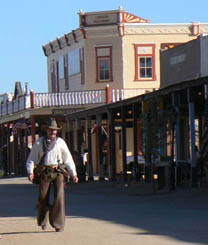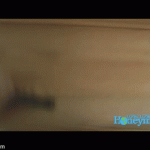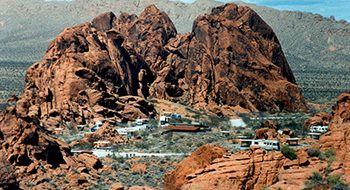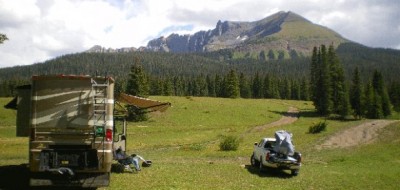By Bob Difley
 Before Lynn and I began fulltiming we took several week-end and Christmas holiday vacation trips wrapped in the chilly blanket of the Northern California winter. One particular trip we camped totally alone in a state park redwood grove except for a ranger or two passing through. In fact, the ranger had to open the restrooms for us, since they didn’t expect any campers and had kept them locked. No heat either.
Before Lynn and I began fulltiming we took several week-end and Christmas holiday vacation trips wrapped in the chilly blanket of the Northern California winter. One particular trip we camped totally alone in a state park redwood grove except for a ranger or two passing through. In fact, the ranger had to open the restrooms for us, since they didn’t expect any campers and had kept them locked. No heat either.
We decided then that when we took the fulltiming step we would spend our winters in the Southwestern deserts, where it was warm and the sun shone most of the time. And when it rained, infrequently, it didn’t last long. And so we did.
We were desert neophytes, assuming like many other RVers that the only reason to go to the desert was to spend the worst of the winter months in a dryer, warmer location. Period. Wow, were we wrong.
It didn’t take long to find out that the desert was teeming with life, it was just a different kind of life than we were used to. Nocturnal life, for instance. The creatures of the night hid in burrows or caves during the heat of the day and came out to feed and prowl after the sun dipped below the yardarm, or rather, the saguaro arm.
Wildflowers, that lay dormant under the barren gravel and sand of the desert floor, would mysteriously and miraculously spring forth in a riot of color if just the right amount of rain fell at just the right time. Shrubs that appeared brittle and dead through most of the winter, burst with tiny lavender, white, yellow, and red flowers in the early Spring. Cacti exploded suddenly mid-Spring with neon-bright flowers specifically designed to attract day and nighttime pollinators.
The desert and its flora and fauna, it turned out, functioned on a delicate balance of heat and cold, moisture and aridity, evaporation rate and flash flooding, blazing daytime sun and nighttime covertness. But you didn’t tend to notice much of this desert life if you stayed cooped up in a manicured RV resort on the outskirts of Phoenix, Tucson, or Casa Grande. You had to get out into the open desert, away from the asphalt, the unnatural and alien green grass of the water hungry golf courses, and the rows of dwellings (of any kind) where all these wildflowers, cacti, coyotes, kit foxes, kangaroo rats, and jack rabbits used to be. Into the boondocks, that’s where.
 And something you might not expect was the historical record of the deserts, pre-historic Native American sites with their pueblos, petroglyphs, and intaglios. The miners with their burros (many of which turned feral and now live is small herds through the deserts), and ranchers that tried cattle grazing on the hardscrabble desert floor. Historic sites abound in the open desert, you just have to search them out. And visiting old Western towns is a hoot (Tombstone, AZ photo left).
And something you might not expect was the historical record of the deserts, pre-historic Native American sites with their pueblos, petroglyphs, and intaglios. The miners with their burros (many of which turned feral and now live is small herds through the deserts), and ranchers that tried cattle grazing on the hardscrabble desert floor. Historic sites abound in the open desert, you just have to search them out. And visiting old Western towns is a hoot (Tombstone, AZ photo left).
Desert parks – both state and federal are great places to visit to learn about the deserts and their mysteries. Like Grand Canyon National Park, the State historic parks of Arizona, the huge Anza Borrego Desert State Park in southwestern California, and Joshua Tree National Park east of Palm Springs. These are must-see places if you pass anywhere near them.
The desert was what got us kicked off more than two decades ago into the real pleasures of boondocking. When we found our special spot, out of sight of the highway and away from the sound of tires, away from city lights that dimmed the stars of the Milky Way, away from the dune buggies and ATVs – that was where we found the real, natural, untrammelled desert.
For more RVing articles and tips take a look at my Healthy RV Lifestyle website, where you will also find my ebooks: BOONDOCKING: Finding the Perfect Campsite on America’s Public Lands (PDF or Kindle), 111 Ways to Get the Biggest Bang for your RV Lifestyle Buck (PDF or Kindle), and Snowbird Guide to Boondocking in the Southwestern Deserts (PDF or Kindle), and The RV Lifestyle: Reflections of Life on the Road (Kindle reader version). NOTE: Use the Kindle version to read on iPad and iPhone or any device that has the free Kindle reader app.


